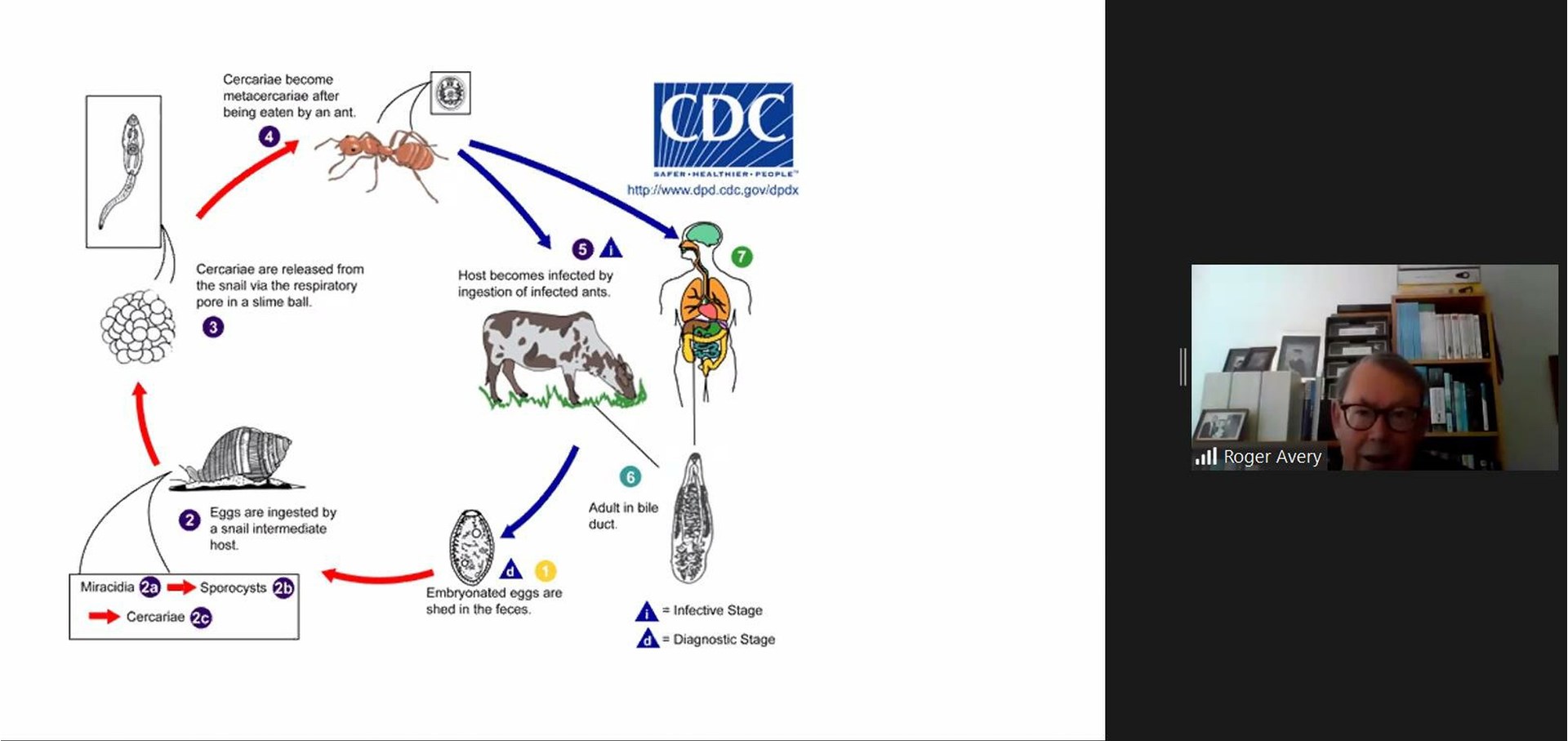Roger Avery's Worms (5th May 2021)
Rick Purnell writes ….
Don’t look at this if you are eating…….
Roger Avery, a retired Zoologist and Exeter University Lecturer, Zoomed 29 members and visitors into his world of worms particularly the parasitic variety, tapeworms, liver flukes, round worms & flat worms.
Roger was assigned to Swimbridge Wildlife Trust for his degree in the 1960’s studying tapeworm infestation in ducks. Understanding the life cycle of the parasite was essential. An infested duck’s tapeworm sheds its last segment containing eggs in the duck’s droppings. The eggs are eaten by micro organism a cyclops and another duck eats the cyclops and the circle is complete. Parasitic worms lay millions of eggs with a small chance of one finding a new host and thus procreating.
The lesser liver fluke has a more incredible cycle of survival. Eggs are ejected in the host’s faeces. Then ingested by a snail. The snail ejects hatchlings from a respiratory pore in a slime ball, An ant eats the larvae which enters its brain and chemically changes the ant’s behaviour. The ant now climbs up vegetation and clamps itself to the top with its jaws and waits to be eaten by grazing sheep or cow becoming the host. Humans can join the cycle either from the ant of the cow living in the bile duct.
Pigs can be attacked by nematode parasites which migrate to the muscle tissue, trichinosis, good reason why some religions avoid/ban pork. Abattoirs have tested for this for the past 100 years and infection is rare. Thoroughly cooking the meat renders it safe but trichinella can survive when under-cooked or ‘rare’. The speaker said he always has his steaks ‘well done’. In concluding, Roger said there are loads of ‘good’ worms essential for our wellbeing such as earth worms, without which our soil would be hopeless for arable food production.
The vote of thanks was given by committee member Malcolm Adams.
